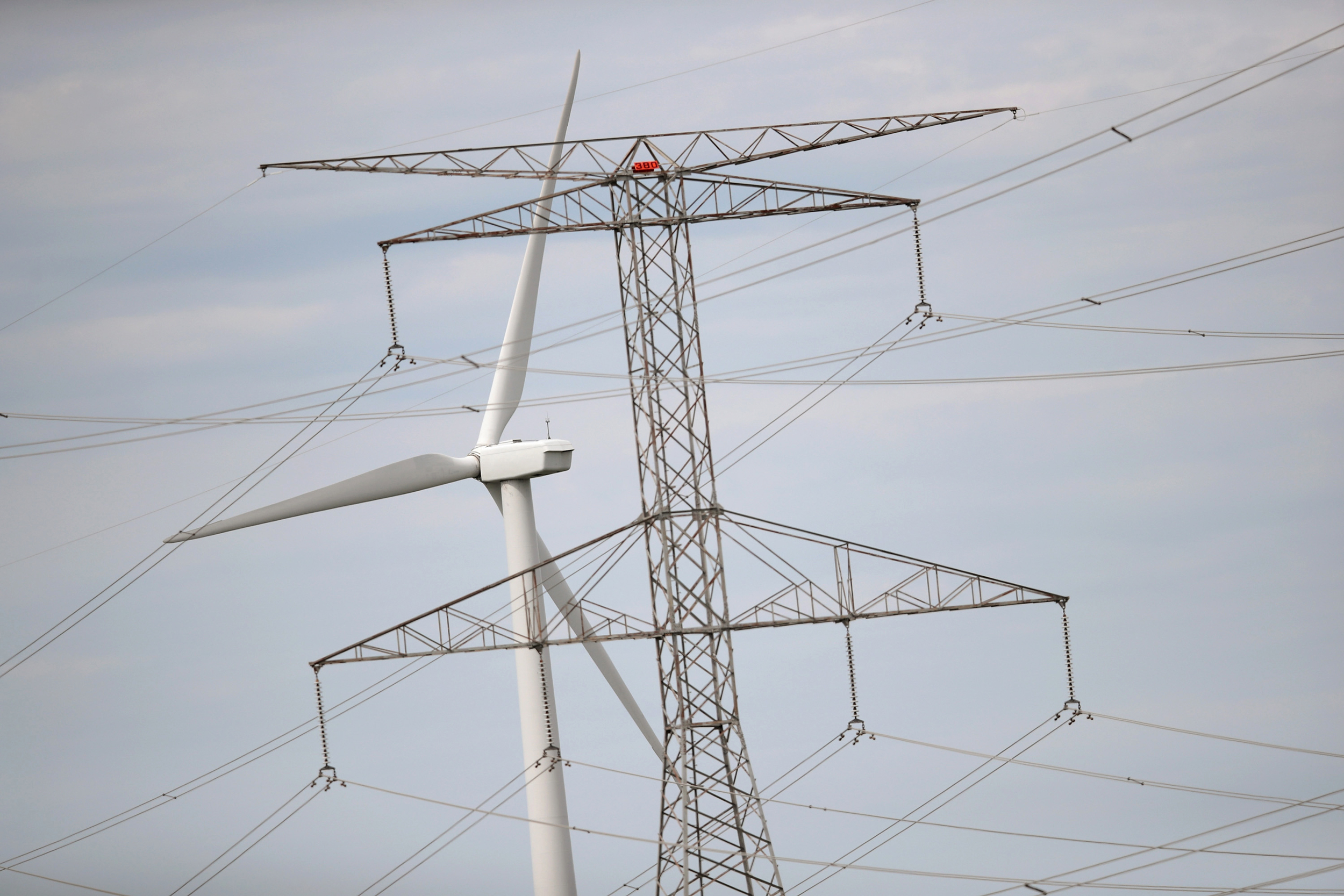Illinois’ General Assembly passed a package of comprehensive energy reforms last week that would help the state reach its clean energy goals and aims to lower prices for consumers.
The Clean and Reliable Grid Affordability (CRGA) Act will add battery storage to community solar projects and fund improvements to energy grid infrastructure that advocacy groups say would cost-effectively help the state meet its goal of transitioning to renewable energy by 2050.
Illinois Gov. JB Pritzker, who expressed support for the bill in the past, is expected to sign it into law.
“We don’t want to be in the position that we were this year, where we were passing a bill in response to rising energy bills. We want our state to be in a position where we are adjusting energy policy along the way so that we’re not having to have those situations in the first place,” said Kady McFadden, lead strategist and lobbyist for the Illinois Clean Jobs Coalition, who worked with policy experts to advocate for CRGA.
The coalition includes environmental organizations, businesses and consumer advocates. Clean energy companies, consumers and other environmental groups also lobbied directly for the bill.
This summer, customers of Commonwealth Edison Co.—the largest electric utility in Illinois—faced a 10 to 15 percent rate increase following pricey energy auctions held by the regional electric grid operators that serve Illinois. Customers of Ameren, the state’s second-largest electric utility, saw spikes of 18 to 22 percent. Power-hungry data centers are helping drive that surge.
The CRGA Act was introduced during the spring legislative session by state Rep. Ann Williams, a Democrat representing Chicago’s North Side, but the bill never made it to a vote following disagreements over battery financing, data center regulations and lifting a moratorium on nuclear plant construction. Oil and gas industry groups lobbied against the measure.
But the bill reemerged during Illinois’ brief “veto session” in October. The act, which passed last Thursday, is an expansion of many of the clean energy provisions in the Climate and Equitable Jobs Act that the General Assembly passed in 2021, which aim to reduce carbon emissions in the energy and transportation sectors.
Certain provisions in CRGA address energy efficiency, part of a comprehensive plan to contain demand on the electric grid. Notably, CRGA involves the development of a state integrated resource plan (IRP), which could help Illinois reduce skyrocketing wholesale power costs through rigorous energy modeling and consumer analysis.
The IRP would be overseen by the Illinois Commerce Commission in consultation with the Illinois Power Agency, Illinois Finance Authority, Illinois Environmental Protection Agency and utilities. The first IRP will be due to the commission no later than Nov. 15, 2026. The second will be due Sept. 30, 2029, with subsequent plans coming once every four years after that.
“There’s no guarantee that the planning will go in favor of renewable energy,” said Jennifer Walling, executive director of the Illinois Environmental Council, which advocated for CRGA. “We think, with the data that we know is available, renewable energy is [the] most affordable source of energy when we’re thinking about new capacity. We feel pretty confident it’s going to go in our favor, but it’s not mandated to.”
Walling said the council is excited about smaller provisions of the bill as well, including a pilot for thermal energy networks that can share heating and cooling within multiple buildings; geothermal renewable energy credits; and natural gas efficiency.
Another provision of CRGA affects the Solar for All program, which gives income-eligible residents access to solar power either by subscribing to a community solar farm or, for homeowners, installing panels on their property at little or no cost.
The bill includes a number of small fixes to the Solar for All program to help it better reach eligible people, including in environmental justice communities. The changes also carve out a Storage for All program to help income-eligible residents access solar energy storage.
“One of the big parts of this bill is storage, and there’s no grid in the country in the next few years that is going to be truly resilient without battery storage,” said Kavi Chintam, campaign manager for Illinois at Vote Solar, who helped write some of the Solar for All language in the CRGA bill.
Over the past year, Chintam has worked with stakeholders and legislators to ensure CRGA provisions result in energy savings for Illinoisans, “and that we’re deploying clean energy in a way that is efficient and in a way that’s sufficient for meeting the moment right now with the increasing demand that data centers are bringing, and combating the federal attacks on clean energy that we’re seeing.”
This story is funded by readers like you.
Our nonprofit newsroom provides award-winning climate coverage free of charge and advertising. We rely on donations from readers like you to keep going. Please donate now to support our work.
Donate NowOther components of the plan include providing ratepayers access to rebates to weatherize their homes, purchase efficient appliances and increase funds for low-income energy efficiency programs; launching a virtual power plant initiative to pool thousands of small solar and storage projects; and strengthening the power grid through improvements in infrastructure and grid-enhancing technologies, increasing the amount of clean energy that power lines can carry.
The bill’s effective date would be June 30, 2026. At that point, a short-term virtual power plant program for customers who already receive battery rebates would start up, Chintam said.
Among the bill’s detractors is the Illinois Manufacturers’ Association, which said that CRGA would increase costs for consumers rather than control them, especially for manufacturers. The group particularly took issue with the IRP provision and the funding of battery storage.
“One of the fundamental disagreements that we have with advocates is they say that this is adding new capacity, and they claim that battery is capacity. Battery is not capacity, battery is not new generation, battery is storage,” said Mark Denzler, the group’s president and CEO.
Although Denzler said the group does want to see more battery storage, the issue is how it will be financed. He said that according to the Illinois Power Agency, the battery storage provision will cost an additional $7 billion, which will be paid by ratepayers. “We think when it comes to battery storage, they should use the Illinois Finance Authority, which provides low interest financing to bonds … which then doesn’t put the ratepayers on the hook, but makes the developers of battery storage have some skin in the game,” he said.
Denzler is also not happy that the Illinois Commerce Commission, the state’s utility regulator, will get through the IRP process “the ability to determine what Illinois’ energy mix will be … with really no oversight from the General Assembly.”
However, the group is happy about the CRGA nuclear moratorium provision, which lifts the remnants of a longstanding moratorium on nuclear power development. In 2023, Illinois partially repealed its long-standing moratorium on new nuclear units by allowing construction of new smaller reactors.
Denzler said the manufacturers’ association has four priorities to address energy issues: Keep the current fleets operating, extending the deadline of coal and other aging-plant shutdowns for energy transitions; add new generation, including nuclear, gas and renewable energy; invest in transmission lines; and further development of technology like battery storage and carbon capture and storage.
“We need an ‘all of the above’ approach to make sure that we have the energy to power the economy,” Denzler said. “There’s not a magic bullet that’s going to solve this problem.”
About This Story
Perhaps you noticed: This story, like all the news we publish, is free to read. That’s because Inside Climate News is a 501c3 nonprofit organization. We do not charge a subscription fee, lock our news behind a paywall, or clutter our website with ads. We make our news on climate and the environment freely available to you and anyone who wants it.
That’s not all. We also share our news for free with scores of other media organizations around the country. Many of them can’t afford to do environmental journalism of their own. We’ve built bureaus from coast to coast to report local stories, collaborate with local newsrooms and co-publish articles so that this vital work is shared as widely as possible.
Two of us launched ICN in 2007. Six years later we earned a Pulitzer Prize for National Reporting, and now we run the oldest and largest dedicated climate newsroom in the nation. We tell the story in all its complexity. We hold polluters accountable. We expose environmental injustice. We debunk misinformation. We scrutinize solutions and inspire action.
Donations from readers like you fund every aspect of what we do. If you don’t already, will you support our ongoing work, our reporting on the biggest crisis facing our planet, and help us reach even more readers in more places?
Please take a moment to make a tax-deductible donation. Every one of them makes a difference.
Thank you,












